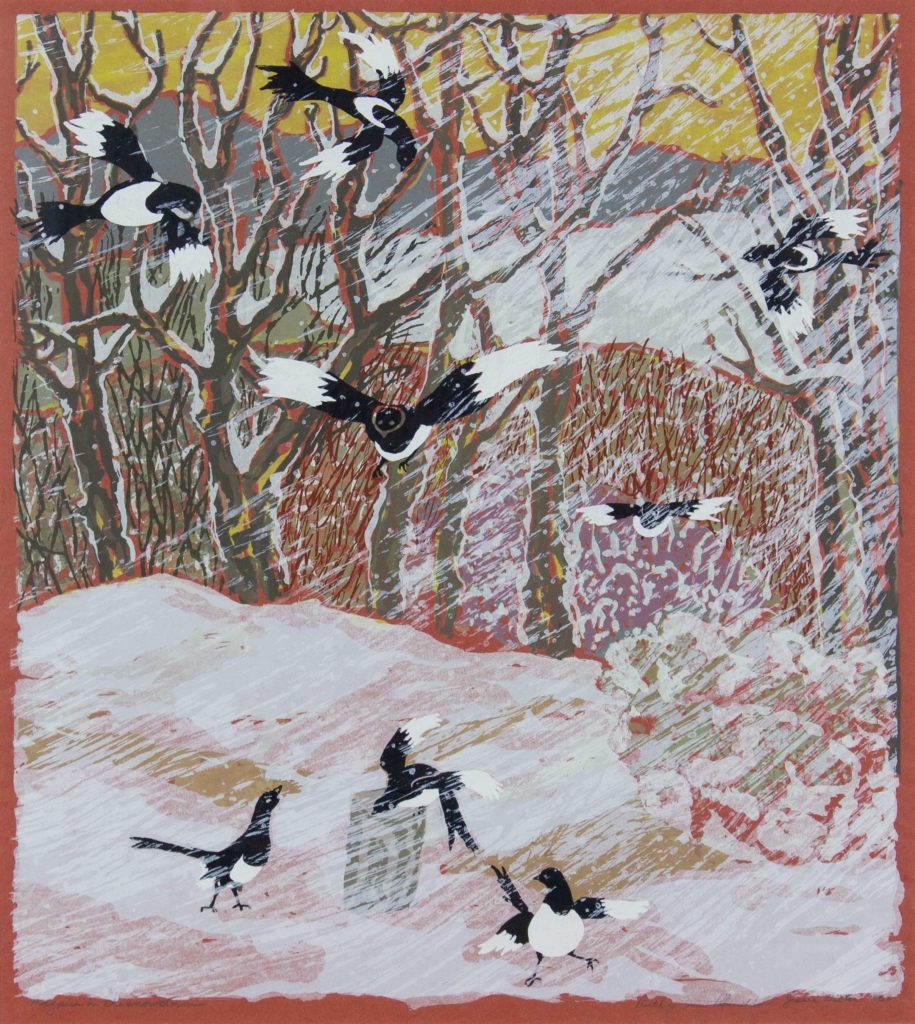matriarchs of modernism
Mildred Sandall Scott Galleries
Matriarchs of Modernism features works from the YAM’s collection by four influential Montana artists, part of the museum-wide theme of “Women’s Work” commemorating the centennial of women’s suffrage. A companion exhibition, Modern Connections, highlights a few of the artists who were taught, influenced, or sustained by these early Modernists.
Modernism was a global movement that aligned with the social upheavals brought on by the industrial revolution. Building on late nineteenth-century precedents, artists began reflecting on the realities, hopes, and fears they experienced in the modern world. From the early decades of the twentieth century through the 1960s, Modernist art encompassed a broad range of expressions while sharing a few underlying principles: rejection of traditional illusionistic styles and conservative values, formal experimentation and a tendency toward abstraction, and innovative materials and processes. Modernism was generally optimistic, driven by utopian ideals and a belief in linear progress.
Jessie Wilber, Frances Senska, Gennie DeWeese, and Isabelle Johnson were not the first Montana artists to embrace Modernist art and values, but they were among the most influential. They mentored students and connected other creatives working in the arts, sciences, and humanities to construct an alternative to the nostalgic cowboy culture of mid-Century Montana.
Beginning in the 1940s, these four Matriarchs of Modernism arrived in, or came home to, Montana after absorbing avant-garde philosophy and practice in urban centers. They, in turn, introduced new ways of thinking about art and teaching to succeeding generations of artists. Over their long careers, they each found ways to combine the formal lessons of abstract composition with personal vocabularies based on close observations of the people, places, and things in their daily lives. Their deep connections to place were consistently reflected in their subjects and in their support for Montana’s creative communities.
Interview with Curator Susan Barnett and Historian Dr. Michele Corriel can be viewed here.
Generous support for the video and virtual tour provided by Art Bridges.
Adopt a Work from the exhibition to support conservation and research for some of the core works in the YAM’s Montana Collection.
exhibition sponsors
The Carolyn K. Ennis Family Living Trust
U.S. Bank
Albertsons
Mert & Sue Musser
Special thanks to donors who adopted specific works in the exhibition:
Lornel Baker
Trish and Tim Matteson
Margit Thorndal

















